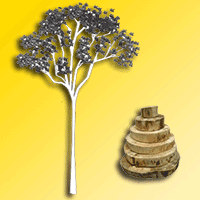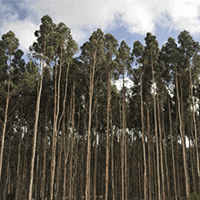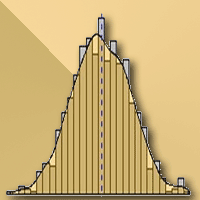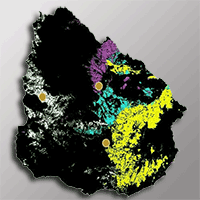
Potential for utilization of wood ash on coastal arenosols with limited buffer capacity in KwaZulu-Natal and its effect on eucalypt stand nutrition and growth
Gerhardus Petrus Scheepers, Ben Du Toit
iForest - Biogeosciences and Forestry, Volume 10, Issue 1, Pages 180-188 (2016)
doi: https://doi.org/10.3832/ifor2146-009
Published: Nov 19, 2016 - Copyright © 2016 SISEF
Research Articles
Abstract
A field trial was established to test the effects of various wood ash and fertilizer application rates on the nutrition and early growth of a clonal Eucalyptus grandis × urophylla stand near Richards Bay, KwaZulu-Natal province, South Africa. The trial consisted of wood ash treatments of 0, 0.3, 0.6 and 1.2 t ha-1, combined with fertilizer treatments of no fertilizer (control), 150 g tree-1 of conventional ammonium sulphate fertilizer or 320 g tree-1 of controlled release fertilizer mixture containing N, P and a balanced suite of several plant nutrients. The experiment was conducted on a young sandy soil of aeolian origin with a very low buffer capacity. Ash application rates were chosen after a pilot study was conducted to test the effect of CaCO3 on the soil reaction. At 4 and 8 months after treatment, soil heavy metal concentrations for cadmium (Cd), mercury (Hg), chromium (Cr) and lead (Pb) levels were substantially lower than toxic levels. Foliar heavy metal concentrations (for the same elements) were less than 1mg kg-1 at both time intervals. The wood ash induced a temporary liming effect up to 8 months after application. Foliar nutrient assessments revealed sub-optimal nutrient concentrations for phosphorous (P), potassium (K) and zinc (Zn) at 4 months and K at 8 months of age. The positive growth responses (expressed as a biomass index) at 8 months, ranged between 13% and 683% relative to the untreated control. At 21 months, the growth response to ash and fertilizer combinations ranged from -0.5% to 50% relative to the control. This research demonstrated that 1.2 t ha-1 of wood ash can safely be disposed of on a typical, poorly buffered Zululand coastal sand with little environmental risk and minimal growth suppression, provided that it is balanced with an appropriate NPS plus trace element fertilizer mixture.
Keywords
Wood Ash, Eucalyptus grandis × urophylla, Stand Nutrition, Entisol, Heavy Metals, Fertilizer
Authors’ Info
Authors’ address
Ben Du Toit
Department of Forest and Wood Science, Stellenbosch University, Private Bag X1, Matieland 7602 (South Africa)
Corresponding author
Paper Info
Citation
Scheepers GP, Du Toit B (2016). Potential for utilization of wood ash on coastal arenosols with limited buffer capacity in KwaZulu-Natal and its effect on eucalypt stand nutrition and growth. iForest 10: 180-188. - doi: 10.3832/ifor2146-009
Academic Editor
Claudia Cocozza
Paper history
Received: Jun 20, 2016
Accepted: Oct 04, 2016
First online: Nov 19, 2016
Publication Date: Feb 28, 2017
Publication Time: 1.53 months
Copyright Information
© SISEF - The Italian Society of Silviculture and Forest Ecology 2016
Open Access
This article is distributed under the terms of the Creative Commons Attribution-Non Commercial 4.0 International (https://creativecommons.org/licenses/by-nc/4.0/), which permits unrestricted use, distribution, and reproduction in any medium, provided you give appropriate credit to the original author(s) and the source, provide a link to the Creative Commons license, and indicate if changes were made.
Web Metrics
Breakdown by View Type
Article Usage
Total Article Views: 48765
(from publication date up to now)
Breakdown by View Type
HTML Page Views: 40816
Abstract Page Views: 2752
PDF Downloads: 3898
Citation/Reference Downloads: 49
XML Downloads: 1250
Web Metrics
Days since publication: 3345
Overall contacts: 48765
Avg. contacts per week: 102.05
Citation Metrics
Article Citations
Article citations are based on data periodically collected from the Clarivate Web of Science web site
(last update: Mar 2025)
Total number of cites (since 2017): 3
Average cites per year: 0.33
Publication Metrics
by Dimensions ©
Articles citing this article
List of the papers citing this article based on CrossRef Cited-by.
References
Waste stream reduction and re-use in the pulp and paper sector. In: Proceedings of the Meeting “Washington State Department of Ecology Industrial Footprint Project”. Santa Fe (NM, USA), August 2008. Center for Sustainable Economy, Santa Fe, NM, USA, pp. 1-45.
Gscholar
Forest plantations. In: “Plant analysis: An interpretation manual (2nd edn)” (Reuter DR, Robinson JB eds). CSIRO publishing, Collingwood, Australia, pp. 503-566.
Gscholar
Soil Chemistry. Wiley-Interscience, New York, NY, USA, pp. 341.
Gscholar
Nutrient disorders in plantation eucalyptus (2nd edn). ACIAR Monograph 74, Australian Centre for International Agricultural Research, Canberra, Australia, pp. 104.
Gscholar
Growth response of a eucalypt hybrid to fertilization at planting across five site types in Zululand. ICFR Bulletin 21/2003, Institute for Commercial Forestry Research, Pietermaritzburg, South Africa, pp. 30.
Gscholar
Effects of slash and site management treatments on soil properties, nutrition and growth of a Eucalyptus grandis plantation in South Africa. In: Proceedings of the Workshop “Site Management and Productivity in Tropical Plantation Forests” (Nambiar EKS ed). Piracicaba (Brazil) 22-26 Nov 2004 and Bogor (Indonesia) 2-9 Nov 2006. Center for International Forestry Research (CIFOR), Bogor, Indonesia, pp. 63-78.
Online | Gscholar
Soil fertility and growth of Eucalyptus grandis under different residue management practices. In: Proceedings of the Workshop “Site Management and Productivity in Tropical Plantation Forests” (Nambiar EKS ed). Piracicaba (Brazil) 22-26 Nov 2004 and Bogor (Indonesia) 2-9 Nov 2006. Center for International Forestry Research (CIFOR), Bogor, Indonesia, pp. 51-62.
Gscholar
Application of wood ash and pulp and paper sludge to Eucalyptus grandis in three Brazilian soils. In: “Principles and Practice of Residual Use”. Seattle, College of Forest Resources, University of Washington, pp. 127-131.
Online | Gscholar
Influence of wood ash on soil chemical composition and biochemical parameters of young Scots pine. Proceedings of the Estonian Academy of Sciences: Biology, Ecology 55: 91-107.
Gscholar
Phosphorus and potassium availability in wood ash-amended soils: an incubation study. In: “Maine Sludge Residuals Utilization Research Foundation Research Report no. 2”. Department of Plant, Soil and Environmental Sciences, University of Maine, Orono, ME, USA, pp. 1-16.
Online | Gscholar
Potential for utilization of wood ash on coastal Zululand soils and its effect on Eucalyptus grandis x urophylla stand nutrition and growth. MSc thesis, Forestry and Wood Science Department, University of Stellenbosch, South Africa, pp. 143.
Gscholar

















